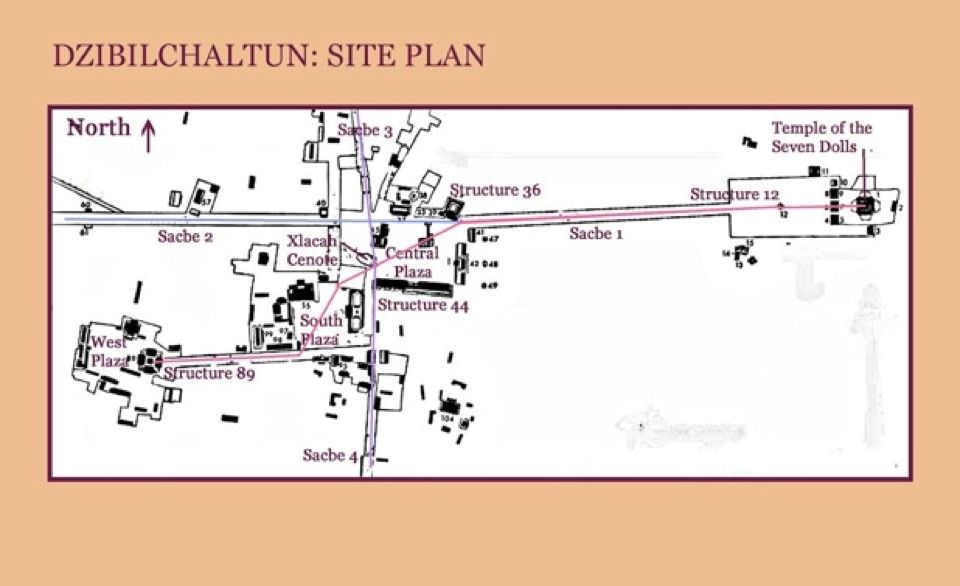
5 SITE PLAN, DZIBILCHALTUN At first glance, the site plan of Dzibilchaltun might seem reminiscent of a Roman castrum with an east-west decumanus, Sacbeob 1 and 2 ( blue) and a north-south cardo, Sacbeob 3 and 4 (lavender) with a forum at their junction (the Central Plaza.) Closer inspection reveals that most lines are not strictly orthogonal; but have a slight "clinamen" or inclination, a characteristic of Mayan scenographic urban design. At Chichen Itza, for example, the eye is led around the site from the ball court around the North Plaza, past El Castillo to the Ossario and Las Monjas in the southern zone, in a carefully staged, unfolding series of views. . At Dzibilchaltun the major temple complex, the Temple of the Seven Dolls ( tTemple of the Sun) is deliberately set off 1.3 km to the west of the central Xlacah Cenote to reorient or extend the site in that direction and provide a theatrical setting for its annual astronomical spectacle. One next notices that the first building at the northeast corner of the city's Central Plaza containing the cenote and leading to its other quarter, the pyramid designated Structure 36, is not only angled to the southwest but juts into the center of the sacbe. This directs attention towards the Temple of the Sun or towards the cenote and Central Plaza depending on which direction one is coming from. Structure 44, a long administrative building like the Honoch-nah at Edzna, forms the plaza's southern side of the Central Plaza moves the eye to the west and the cenote. There another platform angled to the southwest provides the joint between the Central and the smaller, denser and older South Plaza. It in turn points to the plaza's southwest corner and a crowded quadrangle, where another sacbe forms its southern limit. This road leads to a large radial pyramid, Structure 89, which is angled to the northwest, opening onto the large West Plaza. Thus a series of sightlines traces a diagonal (red ) across the city from the Temple of the Seven Dolls in the northeast to the Plaza in the southwest crossing the cenote at the major north south artery (lavender.)